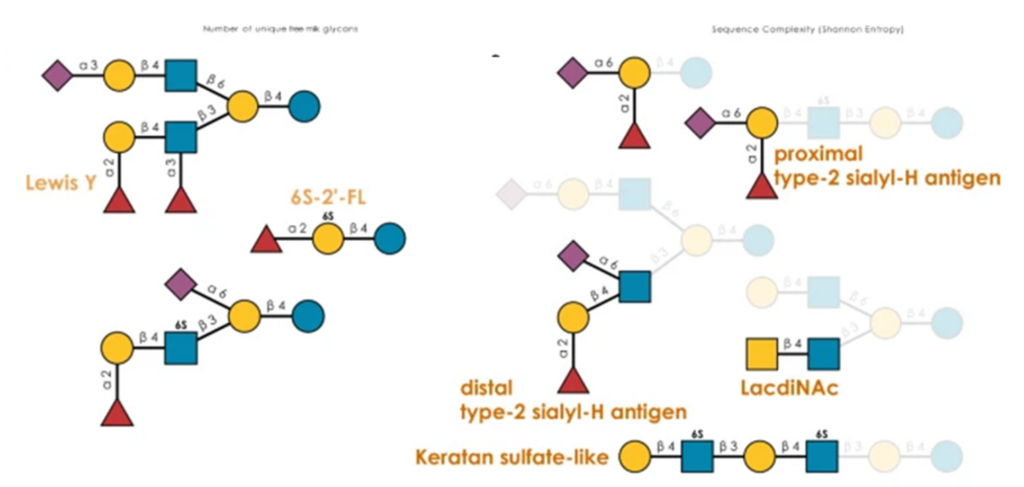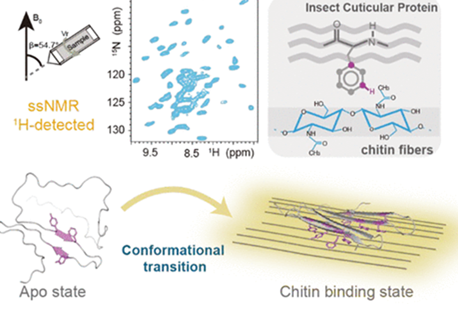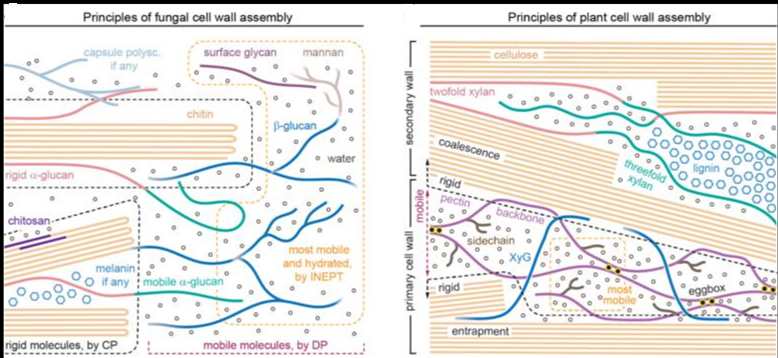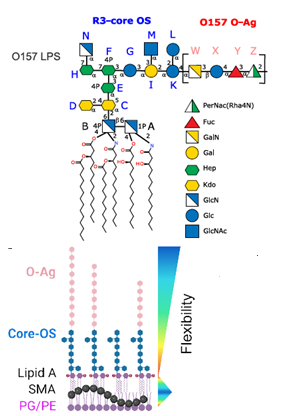The design of innovative pathways other than plant photosynthesis for converting CO2 to starch, is a significant disruptive approach both in terms of conceptual and scientific achievement and promising technological output. The authors develop a chemoenzymatic system and an artificial starch anabolic pathway : Artificial Starch Anabolic Pathway (ASAP) consisting of only 11 core reactions. The pathway was drafted by computational design, established through modular assembly and substitution and fully optimized by protein engineering of three bottleneck-associated enzymes. In a chemoenzymatic system with spatial and temporal segregation, ASAP, driven by hydrogen, converts CO2 to starch at 22 nanomoles of CO2 per minute per milligram of total catalyst. The artificial route can produce starch from CO2 with an efficiency 8.5-fold higher than starch biosynthesis in maize, suggesting a big step towards going beyond nature. It provides a new scientific basis for creating biological systems and opens the way toward future chemo-biohybrid starch synthesis from CO2
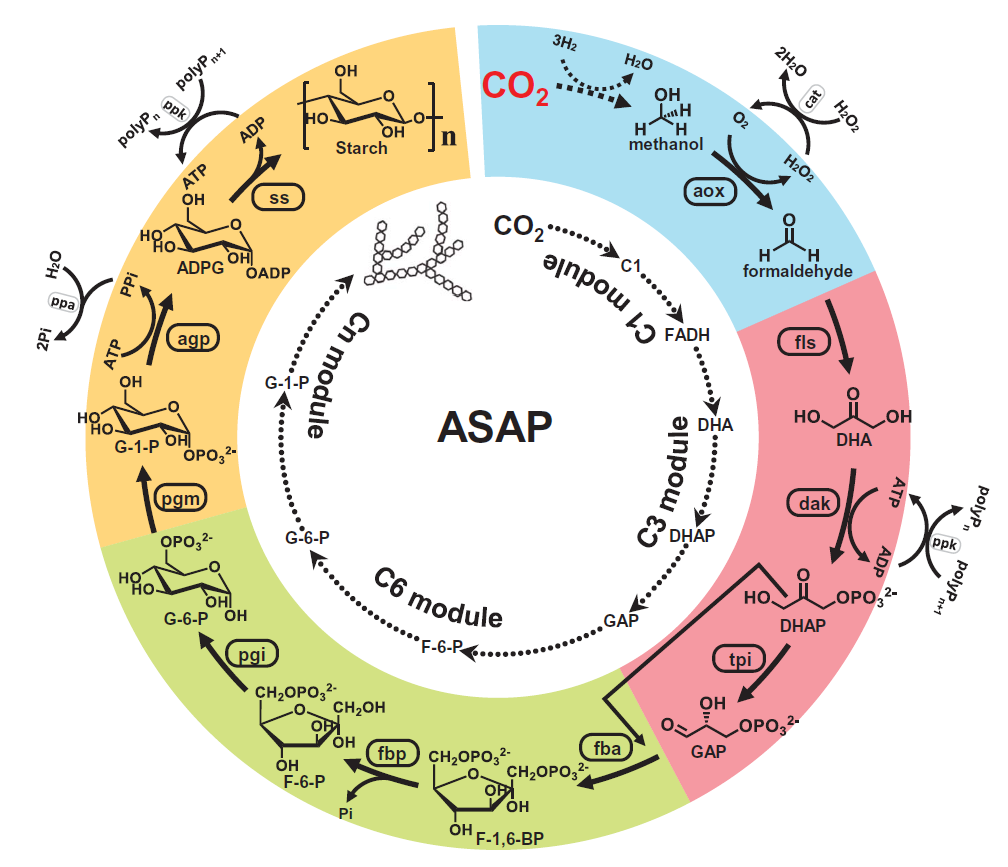
NB. The incorrect anomeric configuration shown in the starch panel, should be corrected as an alpha glycosidic configuration

